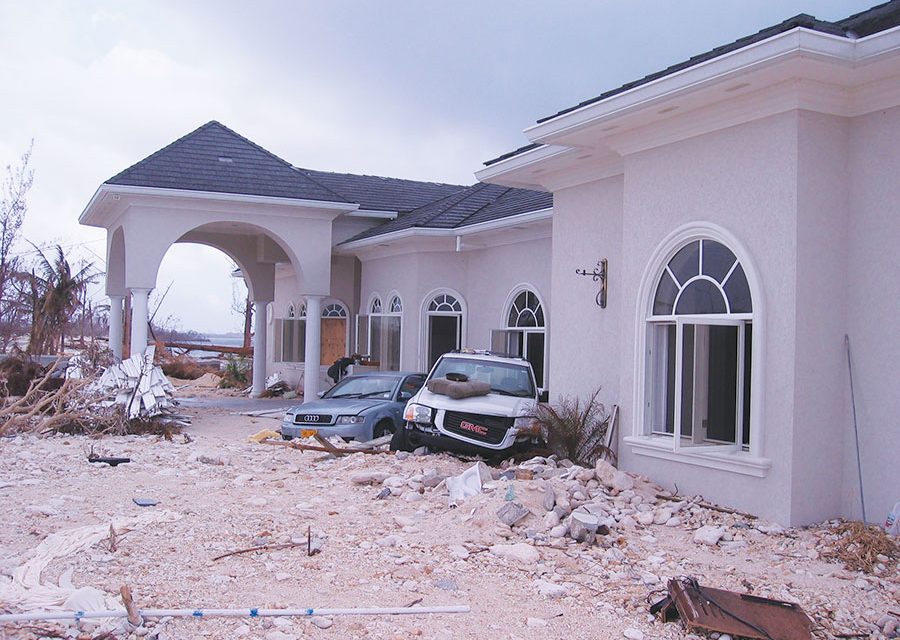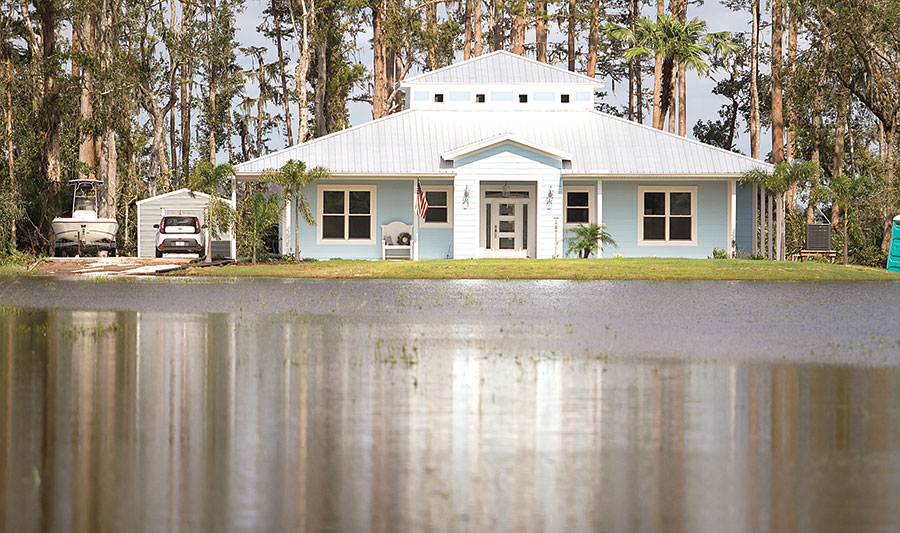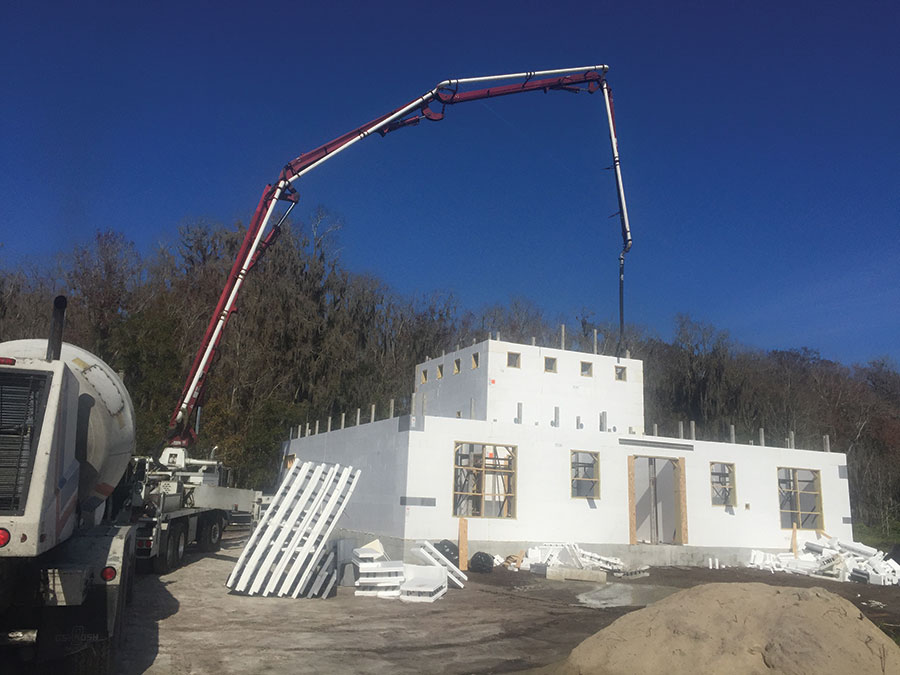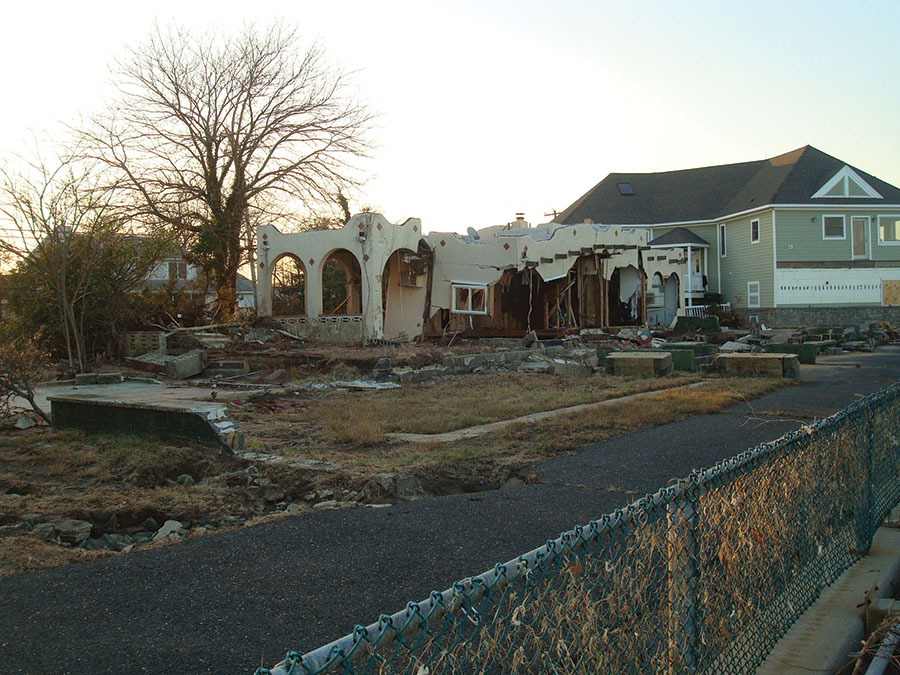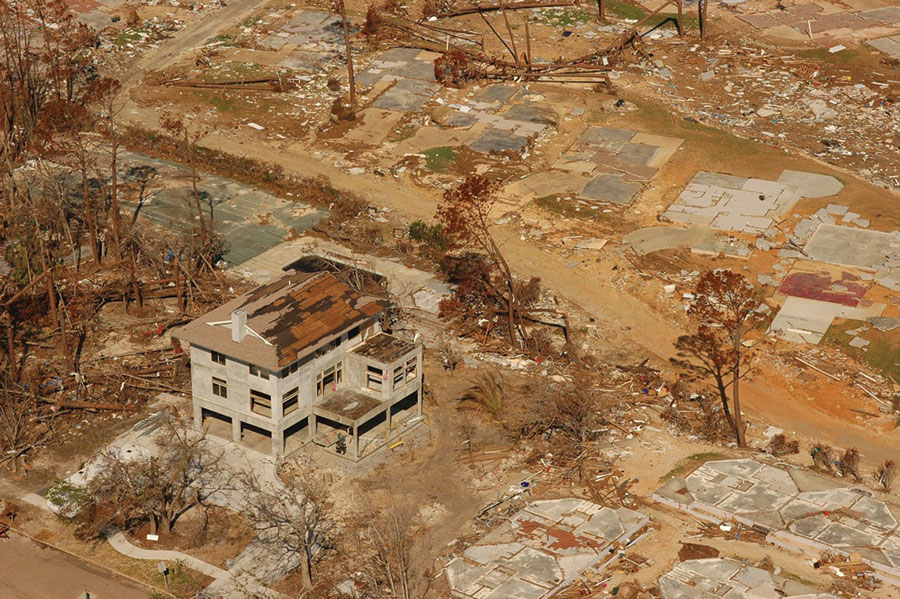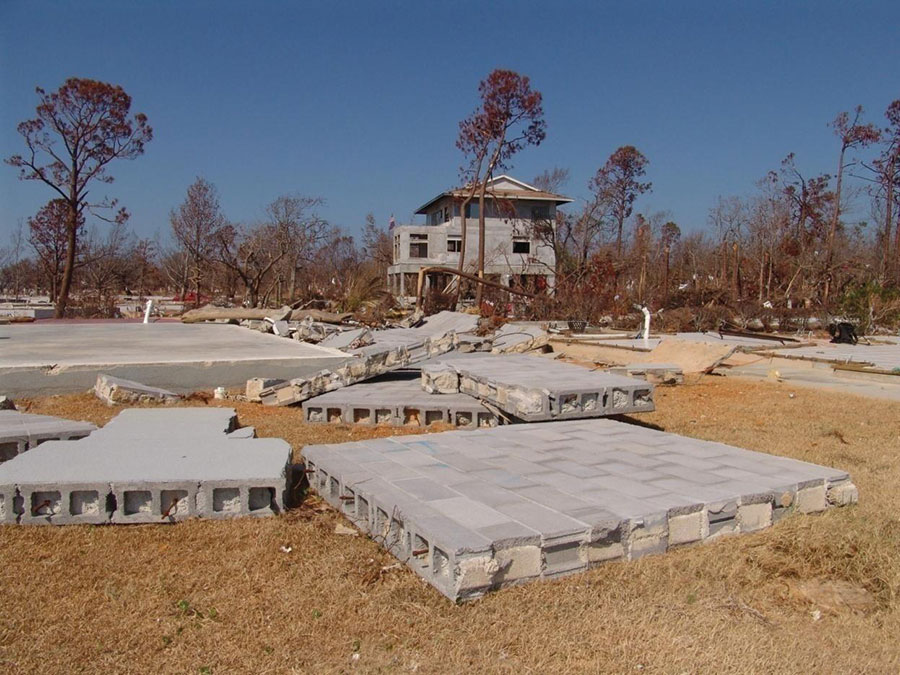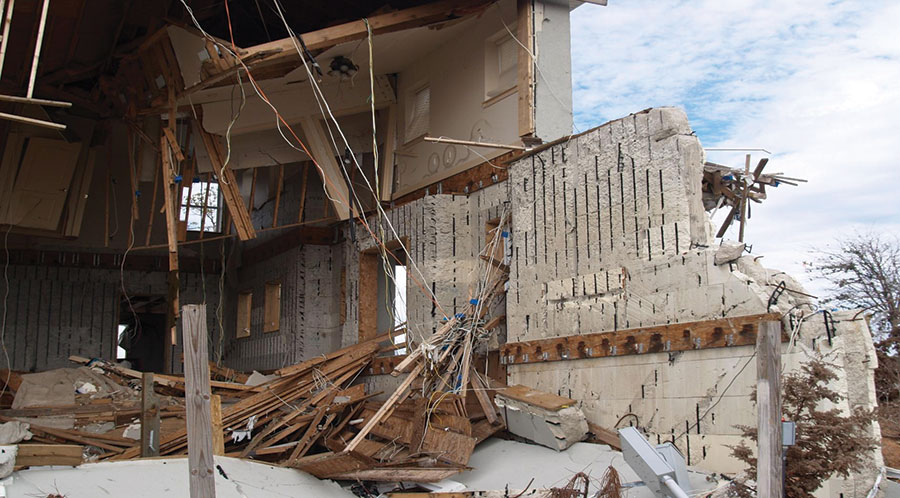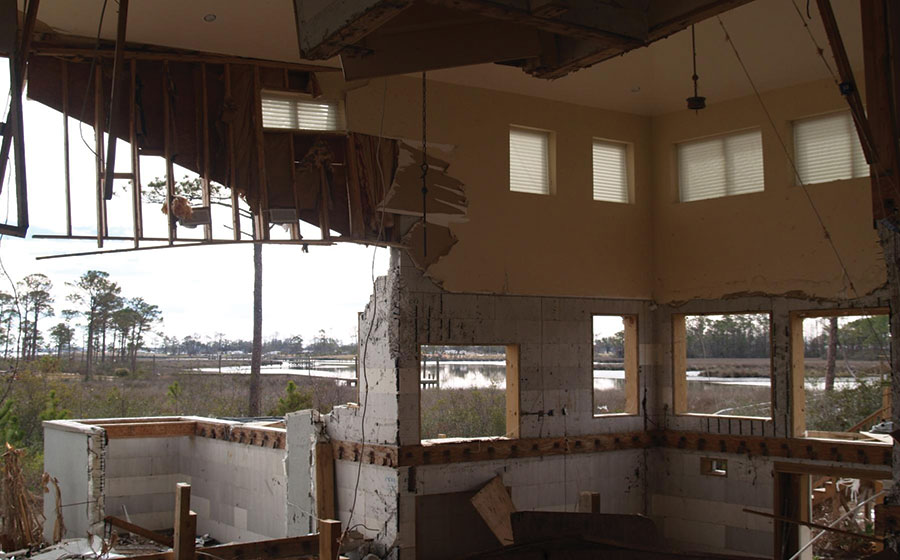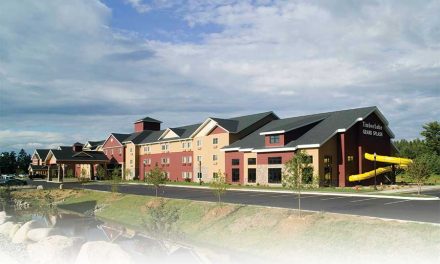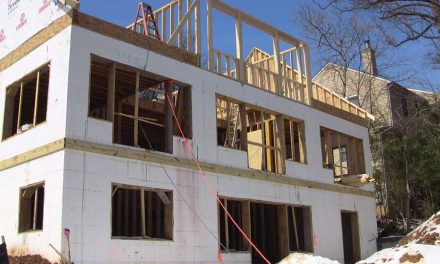This ICF home in the Caymans survived the storm surge from Hurricane Ivan (2004) despite being battered by cars, rocks, and other debris.
Storm surge is one of the most powerful and destructive forces of nature. It is one major cause of the damage and devastation associated with hurricanes. Many of the 1,800 lives that were lost to Hurricane Katrina (2005) can be directly or indirectly attributed to storm surge.
It’s caused by hurricane-force winds, pushing water far beyond the regular high tide line. Superstorm Sandy (2012) produced a storm surge of 14 feet along the coast of Long Island. Hurricane Ike (2008) generated a surge 15 to 20 feet above normal, completely submerging the peninsula Galveston, Texas, is built on. Katrina has the U.S. record, with a surge nearly 28 feet high coming ashore in Mississippi.
Seismic waves (tsunamis) and massive rainstorms—such as Hurricane Harvey in Texas last year—can produce similar surges of water.
The challenge is that water weighs approximately 1,700 pounds per cubic yard, which generates an incredible amount of force. Additionally, the rushing water will turn uprooted trees, dumpsters, automobiles, and other debris into battering rams, demolishing everything in their path. Tests have shown that wood stud walls can be destroyed by waves as small as 18 inches high, and not even concrete construction is immune.
Prevention is Best
For property owners seeking to build a home strong enough to withstand these events, the best option is to avoid flood-prone locations.
Amvic ICF reminds builders, “It’s all about location when it comes to picking the right site for your home. Be cognizant of rising water levels and storm surges as insurance companies will no longer cover homes situated in flood zones. NOAA has released new color-coded maps which show where water surges may occur in the event of inclement weather. Consult these maps and do your research on potential sites prior to committing. Contact your insurance company to check that they cover the area where you are considering buying.”
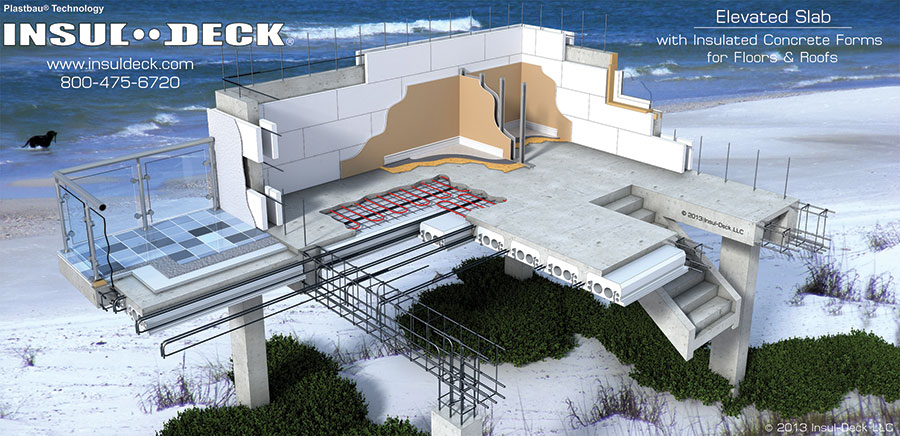
Elevated slabs keep living areas above the storm surge and are very compatible with ICF construction.
Mike Russell is the Logix ICF territory manager for Florida. When he planned his home near the coast between Daytona and Jacksonville, he took special care to ensure it was built to withstand the hurricane that would eventually come. He built with ICF and reinforced concrete, but he also made sure it was elevated well above the flood plain.
The house sits on a “Carolina Slab”—a CMU stemwall foundation extending several feet above grade, filled with dirt and topped with a concrete slab. The site has a FEMA”D” rating, meaning there are “possible but undetermined” flood hazards. In this case, the site is exposed to high tides and “open water high wind potential.” Russell studied the charts, then built the slab 12″ higher than the anticipated maximum 100-year flood height. The roof is engineered to withstand 250-mph winds. It’s hipped on all four sides for maximum wind deflection, and trusses were placed 16″ on center for additional strength.
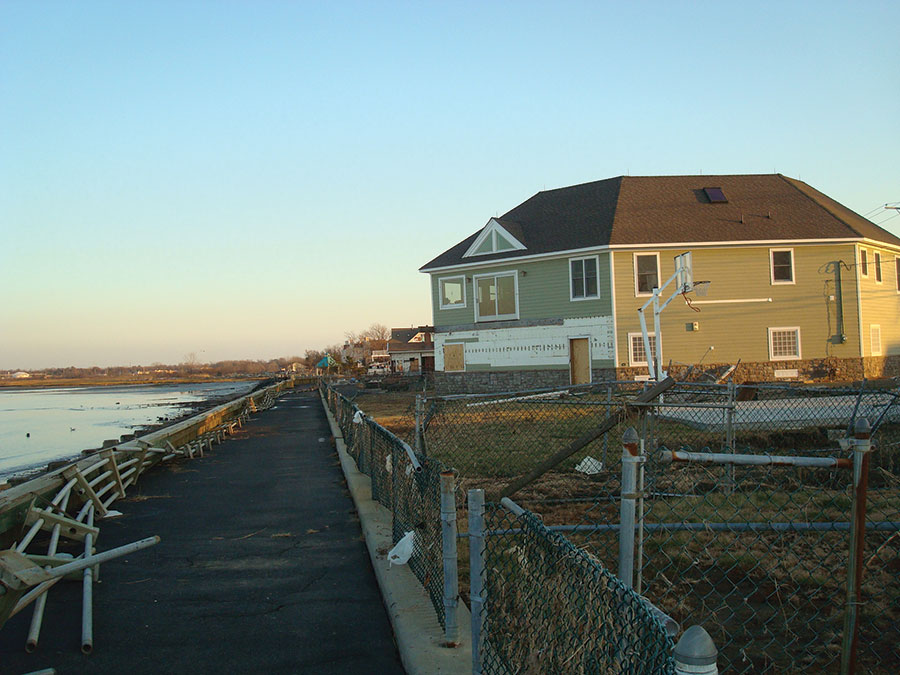
Located just a few feet from the ocean, this ICF home in New Jersey withstood the full fury of Superstorm Sandy’s terrifying winds and pounding waves. Storm surge scrubbed the siding off the lower portion of the home (top), but damage was minimal compared to adjacent houses (bottom), which were either completely destroyed or left gutted, condemned, and abandoned.
In October 2016, Hurricane Matthew hit the house with its full fury. Sustained winds topped 130 mph, with gusts higher than that, and the power was out for four days in most of the county.
When the storm abated, Russell went to check the damage. His careful planning paid off—by a matter of inches. While the storm surge overtopped the Carolina Slab, it stopped just short of the door thresholds. “There was absolutely no damage to the home,” he reports. “We had to power wash some vegetation off the exterior siding. That’s it.”
Incredibly, not 12 months after surviving “the storm of the century,” the home took yet another direct hit, this time from Hurricane Irma, churning her way up the length of the Florida Panhandle after devastating the Caribbean. Again, the house stood above the storm surge and came through unscathed. The local newspaper featured the house as one of the few “survivors,” printing a photo of the home with seawater covering most of the front lawn.
The importance of careful, conservative planning cannot be overemphasized.
Battering Waves
ICFs do stand up to storm surge better than most other wall systems. When Superstorm Sandy roared ashore in October 2012, the coasts of New Jersey and New York were hit with howling winds, torrential rain, and
significant flooding.
The Hallet family rode out the hurricane in their two-story, 4,000-sq.-ft. ICF home in Union Beach, New Jersey. Built just yards from the ocean, there was very little between it and the pounding surf. In fact, at the height of the storm, large waves were actually breaking against the house itself.
The forces were too much for the neighboring structures to endure. The wood-frame houses to the northwest are gone; only their foundations and bits of rubble remain. The CMU home to the southeast was deemed uninhabitable.
The Hallet ICF home, however, survived in good form. Exterior walls have a solid six-inch core of reinforced concrete, and while the waves scoured the siding off the lower portion of the house, structurally, the walls stood strong.
Lessons From Katrina
One of the most famous disaster photos to emerge from Hurricane Katrina is the aerial photo of a solitary home in Pass Christian, Mississippi. Taken by a FEMA photographer, it shows a single three-story home standing tall in a neighborhood where every other structure has been swept away down to a bare slab.
The owner of this home, Scott Sundberg, is a structural engineer who had lost everything to Hurricane Camille in 1969, and vowed that if he ever built his own home it was going to be something that would withstand that sort of disaster. He built with ICFs.
As with Mike Russell in Florida, he also carefully studied the relevant flood maps. The base flood elevation
(BFE) for his area is 14 feet above sea level, so he ensured the ground-level carport had an elevation of 14.8 feet. It was built with cast-in-place concrete columns with breakaway walls. The floor of the living space sits 25 feet above sea level, well above any expected flooding.
The home was about 85% complete when Katrina hit. It was one of the most powerful storms on record, bringing unprecedented damage and destruction along the Gulf Coast. Most of the publicity focused on the flooding in New Orleans, but the storm surge was actually highest in Sundberg’s county. The storm surge in the neighborhood topped 28 feet, about midway up the second story windows. The garage level breakaway walls performed as intended. The vehicles were destroyed, but the panels relieved the stresses that would otherwise have demolished the house. The upper portions of the concrete home survived relatively well, although the windows and roofing experienced significant damage. Sundberg and his wife were among the first to return to the area. Due to labor shortages, they did much of the rebuilding themselves over a period of months.
Sundberg also conducted engineering analyses on other ICF structures along the Gulf Coast, examining how they had withstood the surge.
Design it Right
He reports that most wall systems—including wood and steel—tended to fair well in the hurricane unless hit by something extraordinary, like storm surge or falling trees. Failures tended to be the fault of inadequate design, or improper construction. “Concrete done wrong is worse than wood done right,” he claims.
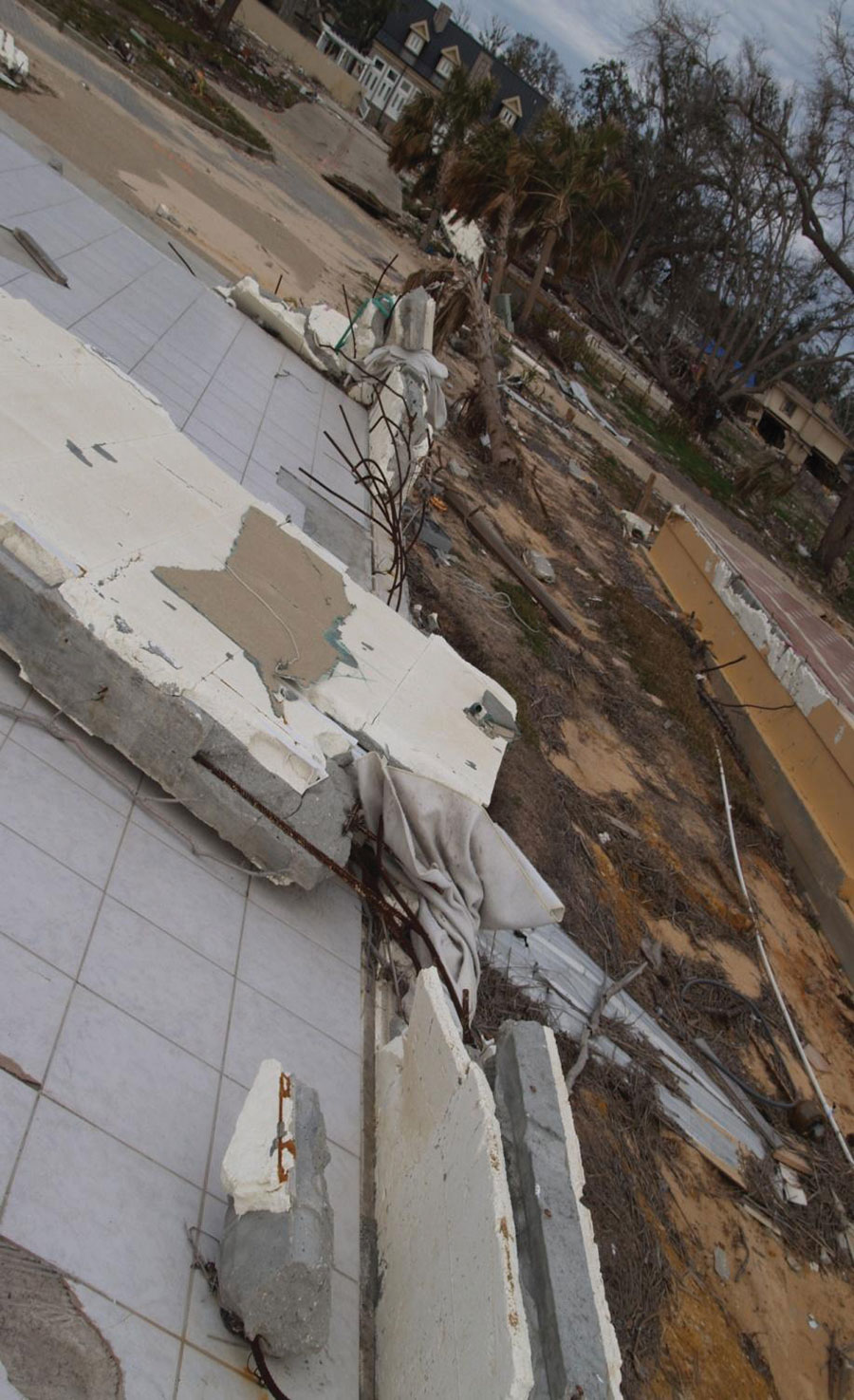
The single biggest cause of wall failure was insufficient or improperly installed reinforcing steel, especially at the footing-wall joint.
For maximum strength, ICF walls need to be braced by perpendicular walls at reasonable intervals, and the floor and roof diaphragms must be solidly connected. Open floor plans and large windows imply long wall spans and require additional reinforcement.
Build it Right
Good design accomplishes nothing if the engineering details are not followed. “Guessing and hoping does not work,” he says. “Assuming the contractor will build it like the drawings does not work. Assuming the ‘code man’ will catch everything does not work. The optimal solution is to have the engineer of record on site.”
He reports that the biggest single cause of failure was improper or insufficient reinforcing steel. Insufficient overlap on the footing-wall joint rods caused some walls to collapse or break off at the cold joint. In other cases the rebar was missing altogether. Pointing to one photo, he says, “This is all too typical. I saw 26 miles of missing dowels, vertical bars, etc., etc., etc.”
Many coastal homes have large windows facing the ocean to take in the view and refreshing breezes. From an engineering viewpoint, these can significantly weaken the wall. He says, “Forces attributable to the area of the opening must be carried by some structural element. A complete, thorough analysis of walls that are more window than wall should be performed by a registered structural engineer, per ACI 318 standards.”
A Final Caution
With thoughtful design and careful construction, ICFs and concrete are among the most durable and disaster resistant building methods. Additionally, they can match virtually any architecture. As the saying goes, they are “the structure, not the style.”
Still, they are not invincible. Sundberg cautions, “Even when designed and built correctly, ICF walls typically do not
survive storm surge when they are perpendicular to the wave action. Walls that do survive in surge zones can cause scour and undermine the foundation. No matter how much we treasure our homes, we do not live in vaults.”

